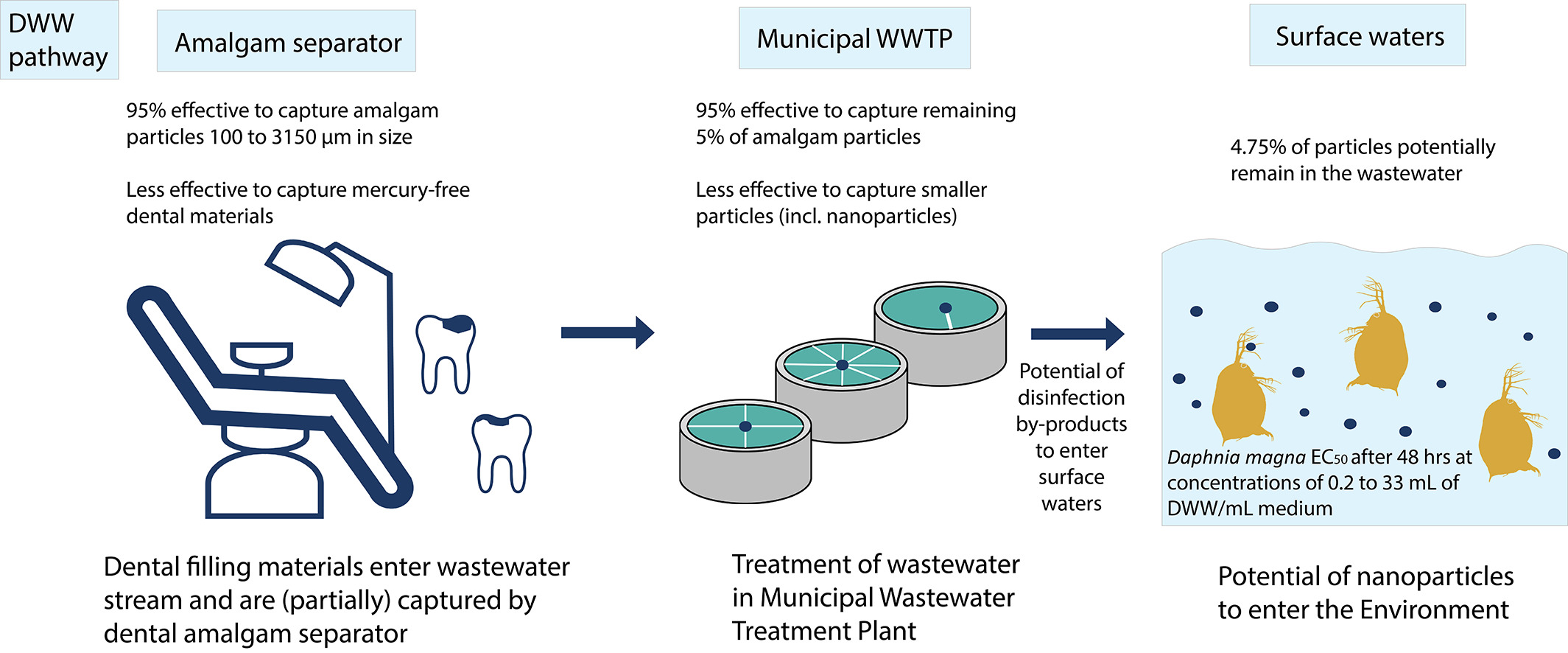In This Section
New article in Science of the Total Environment by Dr Tim Sullivan and Hannah Binner!

MESA Principal Investigator, Dr Tim Sullivan, and PhD candidate, Hannah Binner, have, along with Prof Mairead Harding and Dr Naghmeh Kamali of the Oral Health Services Research Centre (Cork University Dental School & Hospital), co-authored a new publication, entitled Characteristics of wastewater originating from dental practices using predominantly mercury-free dental materials. The study examines the composition and characteristics of wastewater from dental streams, and analyses the ecotoxicity, particulate load and overall risk from this understudied source of environmental contamination. This article addresses a knowledge gap, and highlights central findings that include the presence of micro- and nanoscale particles in dental wastewater, suggesting dental wastewater could act as a pathway for nanoparticles to enter the environment, and an EC50 (48h, D. magna) of as little as 0.2 mL/L of dental wastewater.
The full article can be accessed at: https://doi.org/10.1016/j.scitotenv.2021.152632
Abstract
Dental materials are currently undergoing a revolution. Mercury use, including traditional amalgam (mercury-containing) material used in dental fillings, is now being widely regulated under the Minamata convention, and dental amalgam is currently being replaced by resin formulations in dentistry. These resin-based materials can be tuned to offer varying material properties by incorporation of a range of nano- and micro-particle based ‘fillers’ for different dental properties and applications. However, these innovations may have a concomitant effect on the waste streams associated with common dental applications, in particular the potential for higher concentrations of novel micro- and nanomaterials within wastewater streams, and a potential route for novel nanomaterials into the wider Environment. These new materials may also mean that wastewater filtering apparatus commonly deployed at present, such as amalgam separators, may be less efficient or insufficient to capture these new filler materials in dental facility wastewater. In this work, we analyse dental wastewater streams from three dental facilities in Ireland with differing amalgam separators in place. The potential overall toxicity, particulate load and physicochemical properties are analysed. The overall risk posed by these new materials is also discussed.
Materials & Environmental Science Applications
Grúpa Taighde d'Ábhair & Feidhmeanna Eolaíocht Chomhshaoil
Contact us
School of BEES, University College Cork, Cork Enterprise Centre, Distillery Fields, North Mall, Cork, T23 TK30
